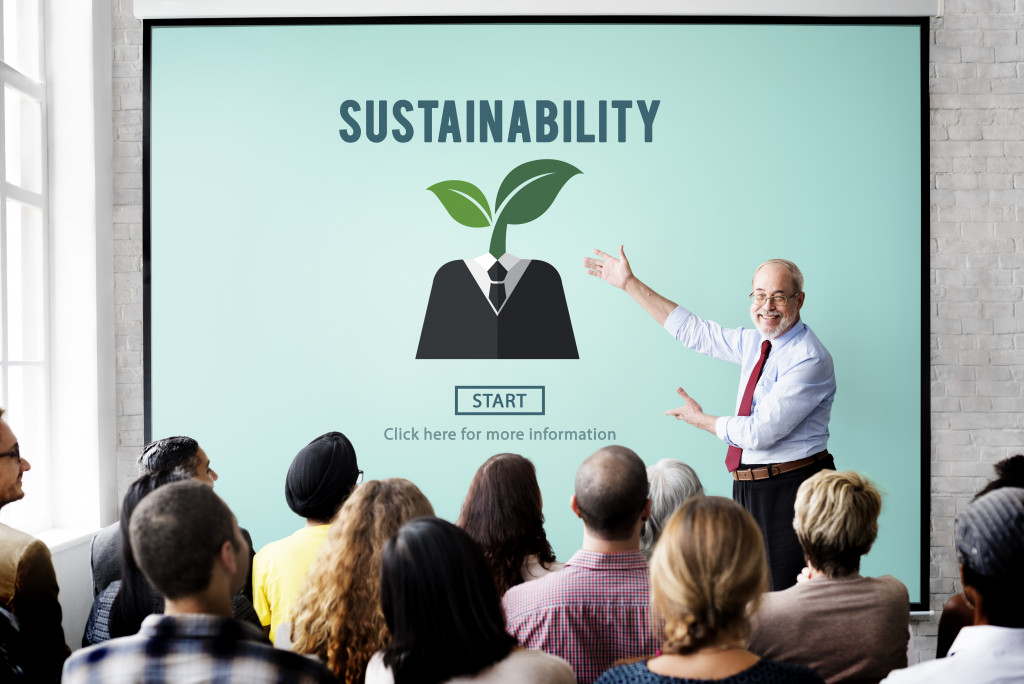- Making a workplace more energy-efficient and sustainable can lead to cost savings.
- Conduct an energy audit to identify and reduce energy wastage.
- Switch to LED lighting for cost savings and a longer lifespan.
- Reduce energy consumption by using automated entry doors, taking advantage of natural lighting, and switching to energy-efficient appliances.
- Develop energy-saving habits and reduce, reuse, and recycle.
In recent years, businesses of all sizes have become more aware of their environmental impact and have taken active steps to reduce their carbon footprint. There are many ways to make your workplace more sustainable, from reducing waste to implementing green energy solutions.
Not only does this benefit the environment, but it can also lead to cost savings and create a positive image for your business. This blog post will discuss some practical steps companies can take to make their workplace energy-efficient and sustainable.
Conduct an Energy Audit
The first step to making your workplace energy-efficient is identifying where energy is used and wasted. Conduct an energy audit to determine your current energy usage, identify areas of energy wastage, and find opportunities to improve efficiency. You can use online tools or hire a professional to conduct the audit. Once the audit is complete, use the findings to develop a plan to improve your energy efficiency.
Switch to LED Lighting

Lighting consumes a significant amount of energy, and switching to LED lighting can reduce your energy consumption by up to 50%. LEDs are more energy-efficient, cost-effective, and have a longer lifespan than traditional lighting solutions.
They also don’t contain hazardous chemicals found in traditional bulbs, making them safer for the environment. Switching to LEDs can be done step-by-step, starting with the most frequently used areas, making it easier to adjust your budget.
Reduce Energy Consumption
Businesses are the largest energy consumers, so reducing your energy consumption is a great way to reduce your carbon footprint. Here are some ways to reduce your energy consumption:
Automated Entry Doors
One way to reduce energy consumption in the workplace is by installing automated entry doors. Traditional doors often remain open for several minutes while people enter and exit the building, leading to a significant waste of energy as the heating or air conditioning escapes outside.
Many energy-efficient automatic door operators are available, but the Norton low-energy door operator is an excellent business option. Its advanced technology and energy-efficient design make it a top choice for companies looking to save money and reduce their carbon footprint. Not only does it help to conserve energy, but it also allows for smooth, safe, and reliable operation of doors for all users.
Utilize Natural Lighting
Natural lighting is a valuable resource for businesses and entrepreneurs looking to save energy in the workplace. The use of natural lighting means taking advantage of sunlight, which is free, eliminates the need for lighting, and reduces energy consumption during the day.
You can design your workspace with large windows or skylights to let natural light in and install translucent shades or blinds to control or block out the brightness and heat. Additionally, you can choose energy-saving light bulbs for lighting during non-daylight hours, which are more durable and use less energy than incandescent bulbs.
Switch to Energy-Efficient Appliances
Energy-efficient appliances are another valuable tip for businesses to reduce energy consumption in the workplace. Computers, printers, refrigerators, and other electronics often consume much energy but can contribute to substantial cost savings if replaced with their energy-efficient counterparts. Energy-efficient devices consume less power, are more reliable, last longer, and reduce electricity bills significantly.
Develop Energy-Saving Habits
With the best technology and energy-efficient appliances, it is still essential to develop energy-saving habits amongst employees to reduce energy consumption within the workplace.
Simple things like turning off office appliances and lights when not needed, unplugging devices from wall sockets, and encouraging natural ventilation can significantly save energy bills. Employees can also be incentivized to use public transport to and from work, cycle, or walk instead of driving, reducing energy expenditure.
Reduce, Reuse, and Recycle

Make it a priority to reduce waste in your workplace and recycle wherever possible. You can set up recycling bins throughout your workplace, give employees reusable utensils to reduce waste and encourage them to recycle paper, plastic, and other materials. Consider using recycled products like paper, paper towels, and toilet paper.
To Sum Up
Making your workplace energy-efficient and sustainable is a positive step towards reducing environmental impact while benefiting your business’s bottom line. Implementing energy-efficient solutions and encouraging eco-friendly practices among employees can lead to cost savings, increased productivity, and a positive image for your business. Follow the steps discussed in this article to make your workplace more energy-efficient and sustainable.



